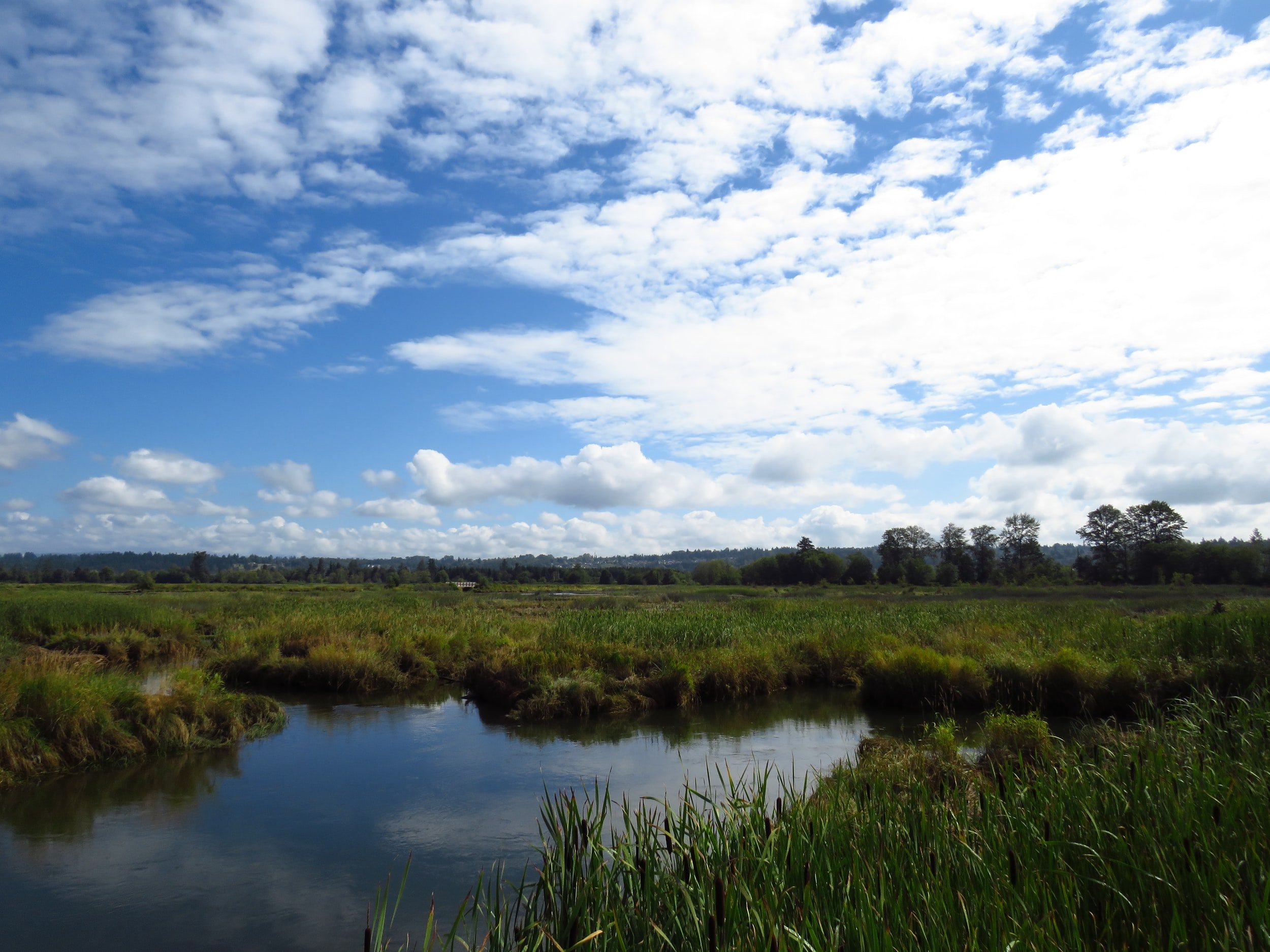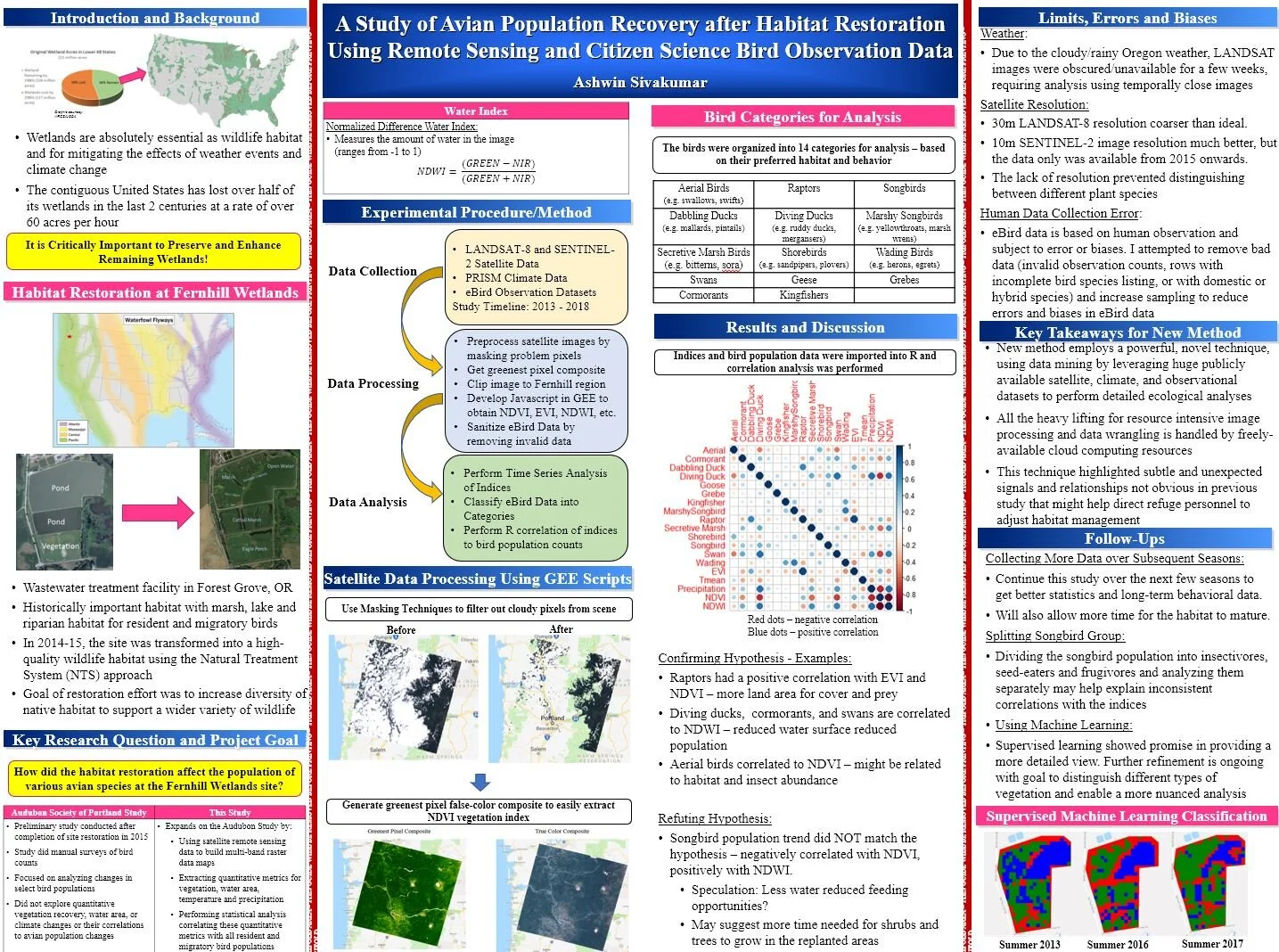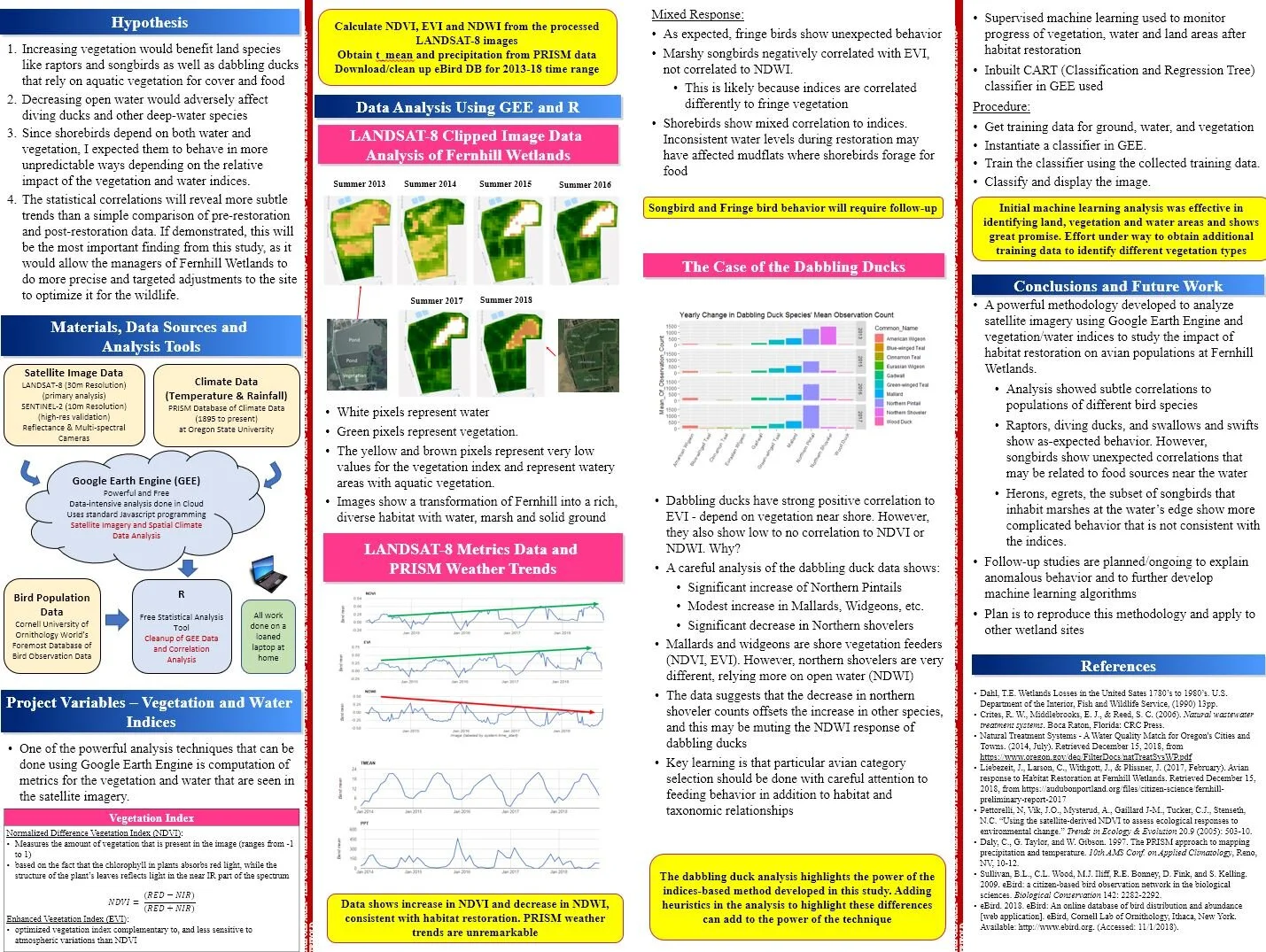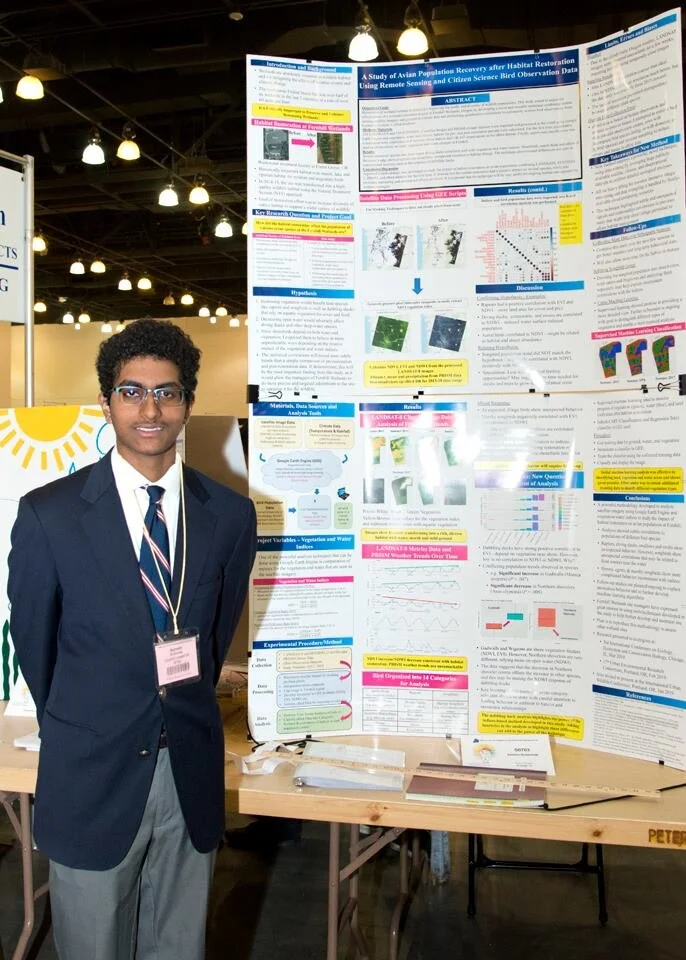
Biodiversity changes after wetland restoration
A study of avian population recovery after habitat restoration using remote sensing and community science bird observation data
Abstract
A Study of Avian Population Recovery after Habitat Restoration Using Remote Sensing and Community Science Bird Observation Data
Ashwin Sivakumar
Project done in collaboration with Joe Liebezeit, Audubon Society of Portland, OR and Jared Kinnear, Clean Water Services, Forest Grove, OR
During the last two centuries, the contiguous United States has lost over half of its wetland habitats. Preserving the remaining wetland habitats and reversing this trend is of critical importance. Fernhill Wetlands in Forest Grove, Oregon is a natural wastewater treatment site that was transformed from unused wastewater ponds to a complex natural wetland habitat in 2014-15. To assess restoration effect on biodiversity changes, previous studies involved manual observations of changes to bird populations. In this study, LANDSAT-8 and SENTINEL-2 satellite imagery and PRISM climate data were used to calculate vegetation, water and climate indices for Fernhill Wetlands for pre- and post-restoration periods, ranging from 2013 to 2018. Then, for the first time quantitative correlations were established between these indices and community science bird observation data from the Cornell University eBird database. The study showed previously unobserved effects of the habitat restoration, positive and negative, on several species. Shorebirds, marsh birds and others that lived at the water’s edge showed much subtler and sometimes unexpected reactions to the habitat change. Further, supervised machine learning classification was used to obtain clarity on land, vegetation and water changes in the region of interest. This study could be of interest to wetland managers to help guide further habitat modifications


